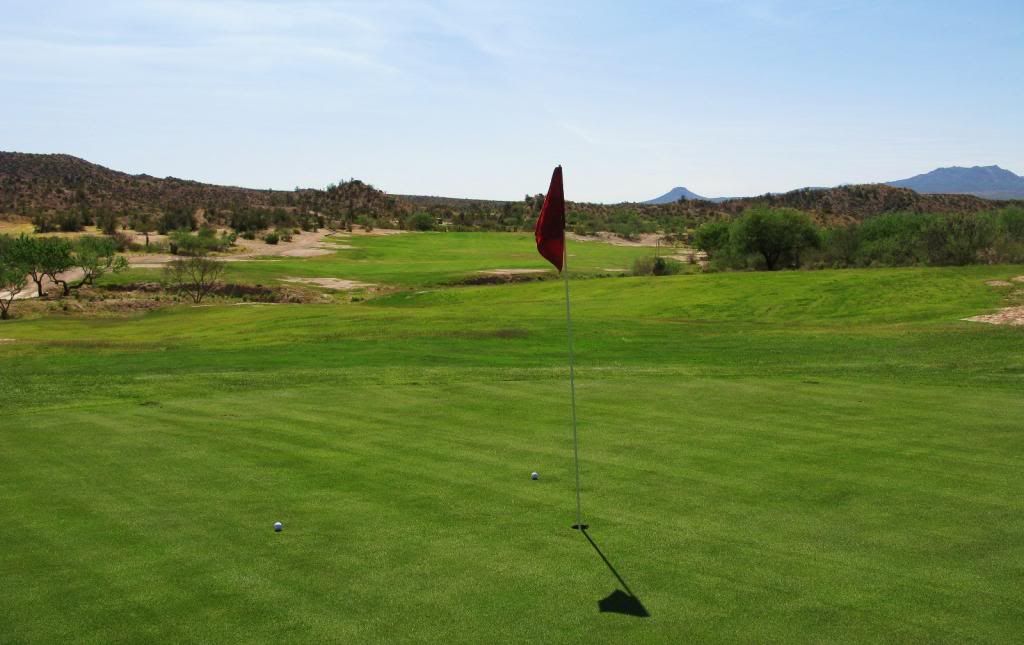May 2002 … Matt Cohn wrote... The design at Apache is just really good. It's very easy to tell that an exceptionally talented architect was involved. Overall, the people who visit this website will absolutely love Apache. People who have never heard of or don't understand this website might want to stick to the lush grass and posh hotels of Scottsdale.
A long straightaway par-4 which heads northwest, “Gila Monster” is a big par-4 with a landing area - some 10 feet below the back tees - which looks tighter off the tee than it really is, as it widens past some brush areas. The entire fairway cants imperceptibly from right to left, but is not that noticeable until one reaches the green and looks back down the hole towards the tees. There’s a speed slot down the left side to take advantage of, but bust it out there too far and too left and you’ll have to deal with sand.
It's interesting how the tee boxes have been laid out. The back tees are some 60 yards to the left of the more forward tees, and have to deal more directly with that big bunker on the left side (see aerial photo below).
After crossing another small arroyo, the golfer climbs gently to the green. The green site is really cool, perched on a hillside with several great pin positions. The front shelf is some 15 yards deep before sliding 25 yards down to the back edge. Balls hit onto the hill left of the green could careen down onto the green with varying results, or get hung up in the vegetation (note my wife walking in that area in the photos below). The swale in the green is tied in perfectly with the surrounds on the left. Tom Doak is known for some pretty wild greens, and this one is probably the wildest of Apache Stronghold’s 18. But it doesn’t seem wild, as it ties in perfectly with the slopes coming in from the sides. Another great green.
The fairway here was, for the most part, in good shape. There were, however, several patches of sand/gravel between tee and green, as evidenced in the photos. This was mitigated to some degree by the wonderful rolling contours in the fairway, coupled with the expansiveness one feels when out on this fairway. The green, and surrounds, were in good condition.
“The greens that especially come to mind are 1 and 5. Those greens were essentially natural contours that we just welled out, trying not to change the natural contours and surrounds. I really don’t think any of the architects I was familiar with then would even think about using those wild landforms as greens.” (Kye Goalby, April ’10)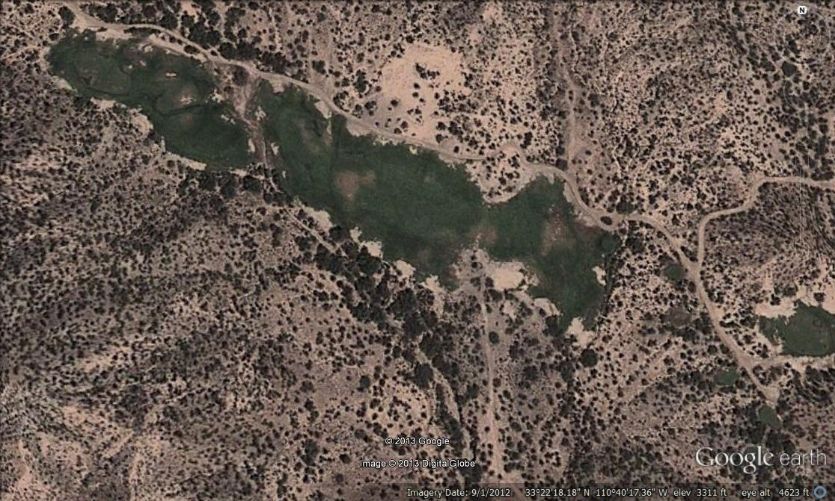
Looking out from the Apache tee; more room to the right than there appears to be…
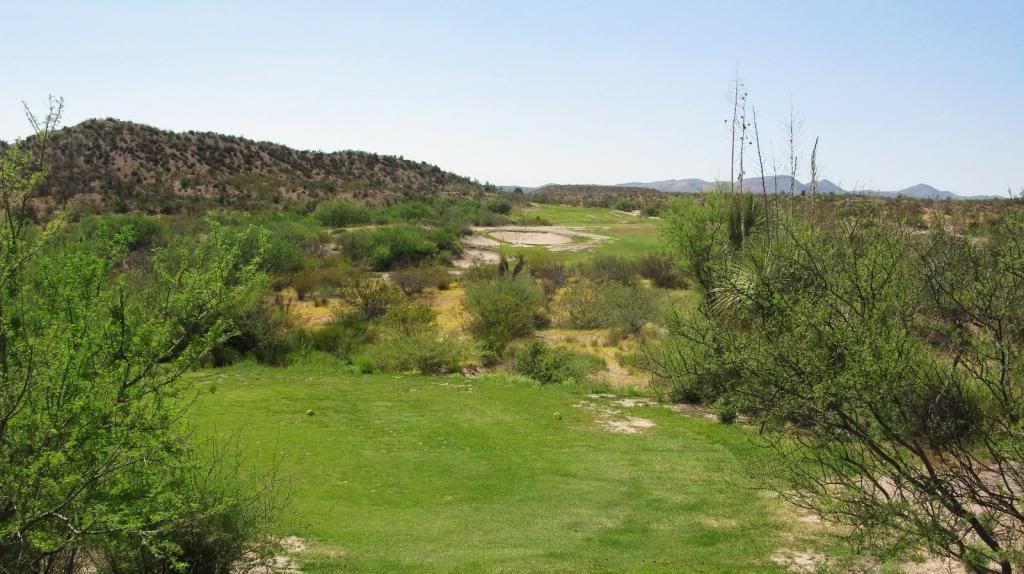
225 yards out; these are certainly playable conditions here…

In the middle of the fairway, lots of room to roam…
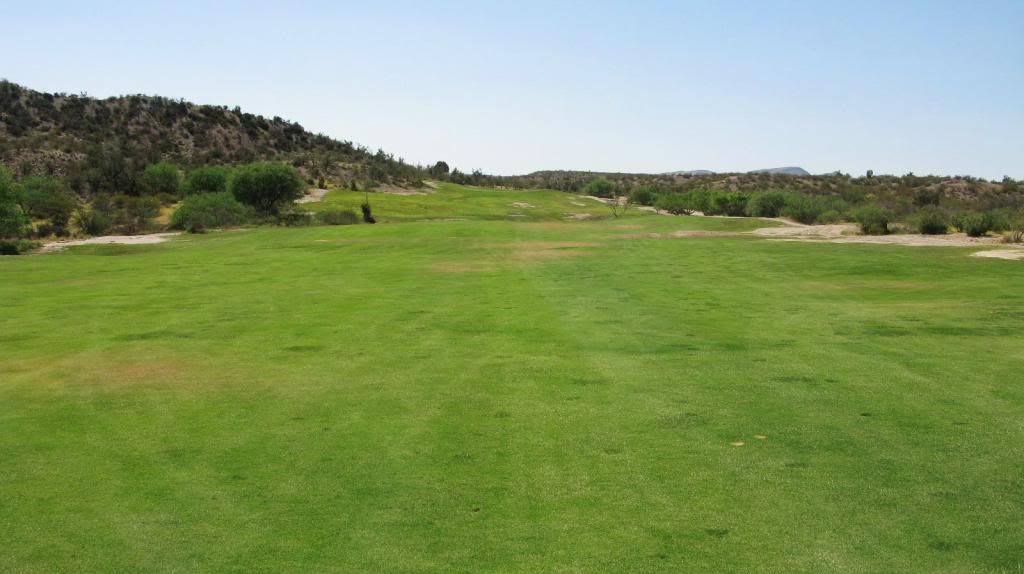
In the left side of the fairway…
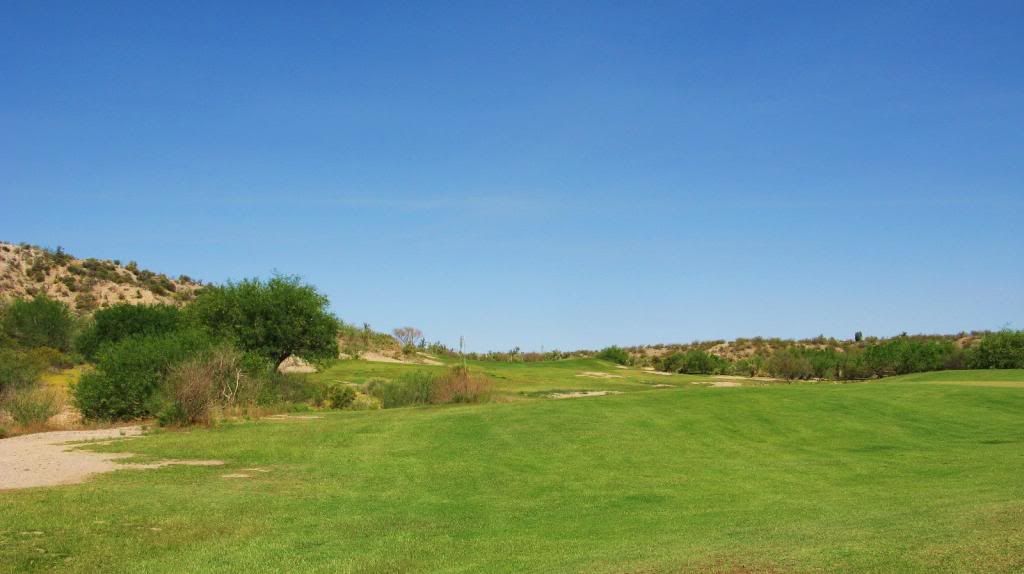
The approach to the 5th green…
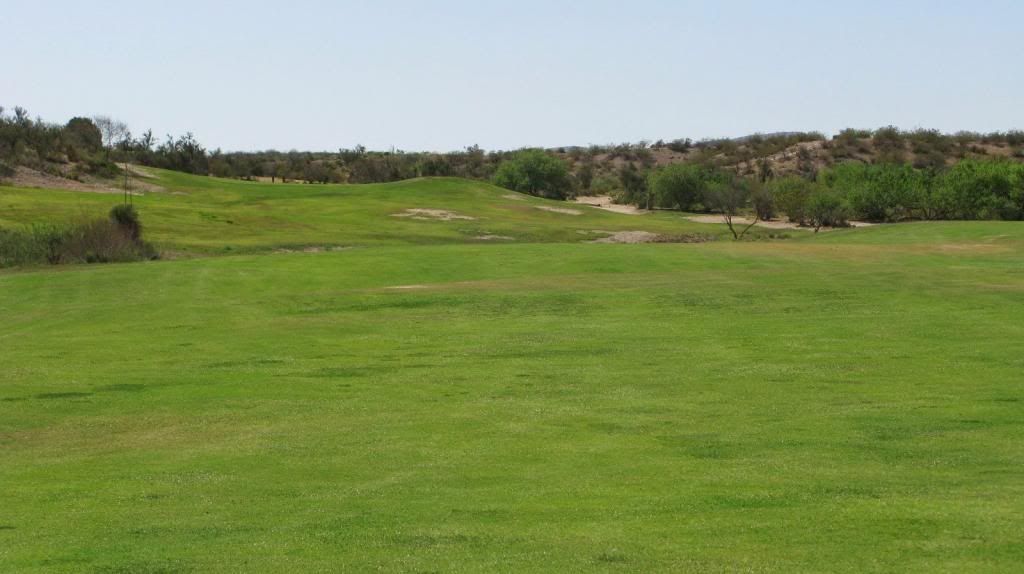
In the right side of the fairway, about 150 yards out. Here’s a good example of what Jim Urbina says the course needs, some “TLC”. Note the contours on the other side of the arroyo…
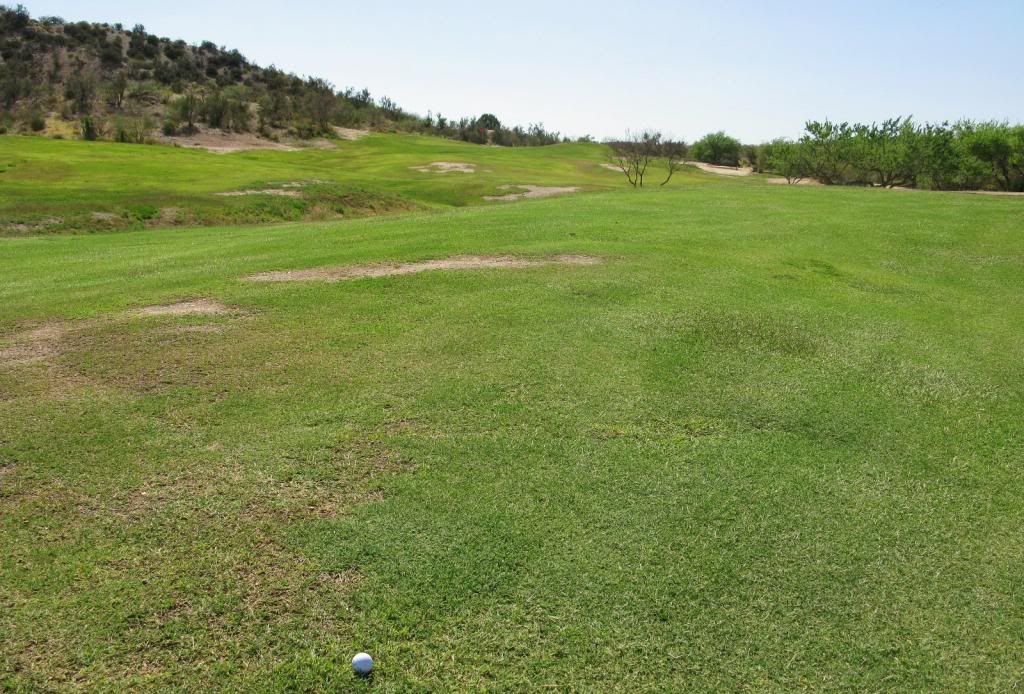
Climbing to the green. Note that the sandy/gravelly patch several yards ahead is on another “high” spot. It seems to be a recurring theme here. Note also the basically blind approach to the green. No concerns, though, the green is 40 yards deep…
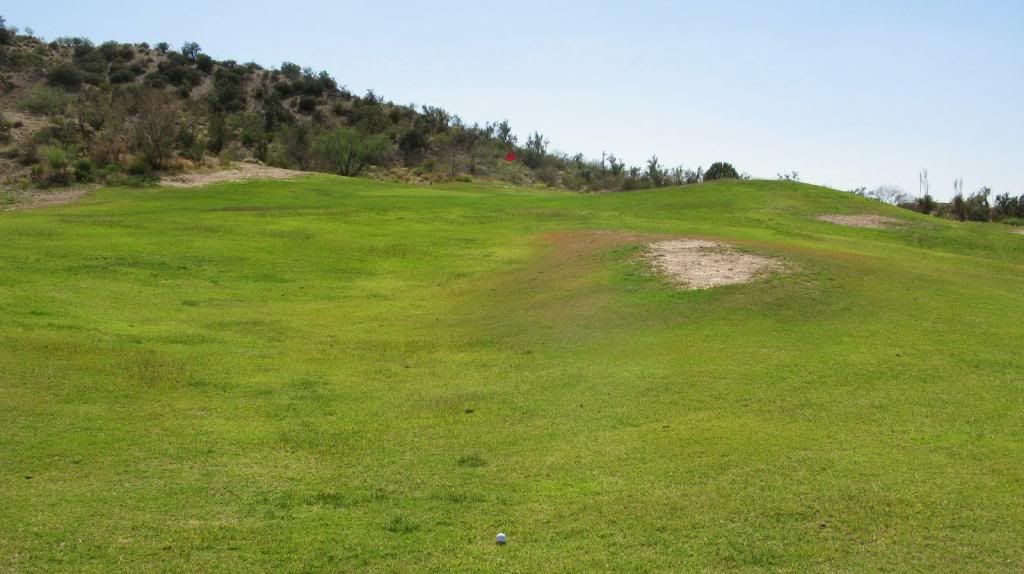
Looking back to the tees, from the back right of the green (which was in excellent condition btw).
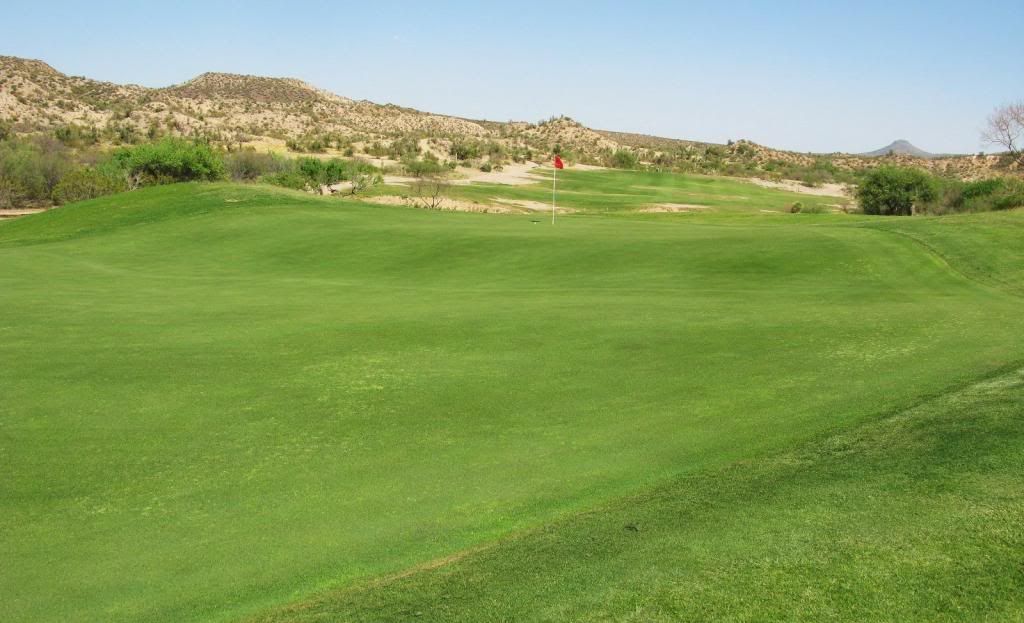
Looking back to the tees, from the back left of the green (notice the sideways slope of the fairway). Note how the green contours tie in perfectly with the ridges coming in from the sides, the “bump” on the left side of the photo (“natural”, according to what I’ve read from Kye Goalby), and the two ridges coming down from the hillside on the right edge of the photo. The bump immediately above the flagstick and the bump to the left of it are the two hills which support the saddle of the 4th green…
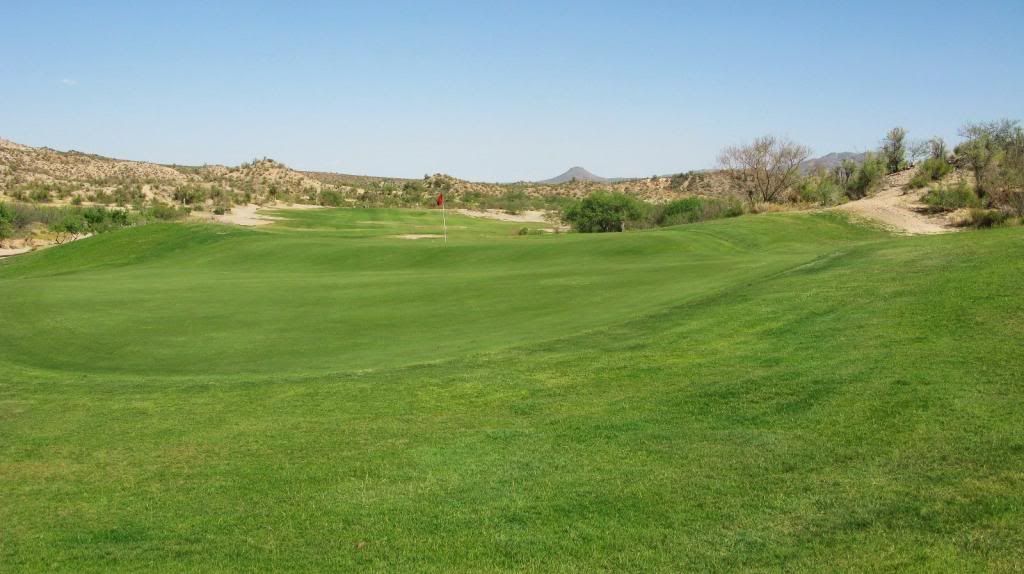
The front of the green, looking from the fairway…
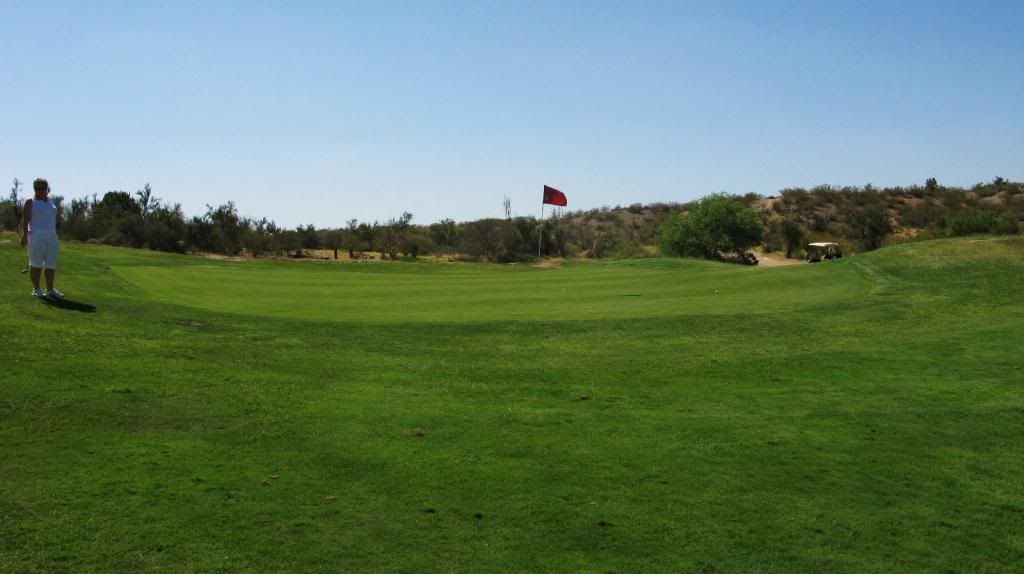
The front of the green, looking back to the tees…
